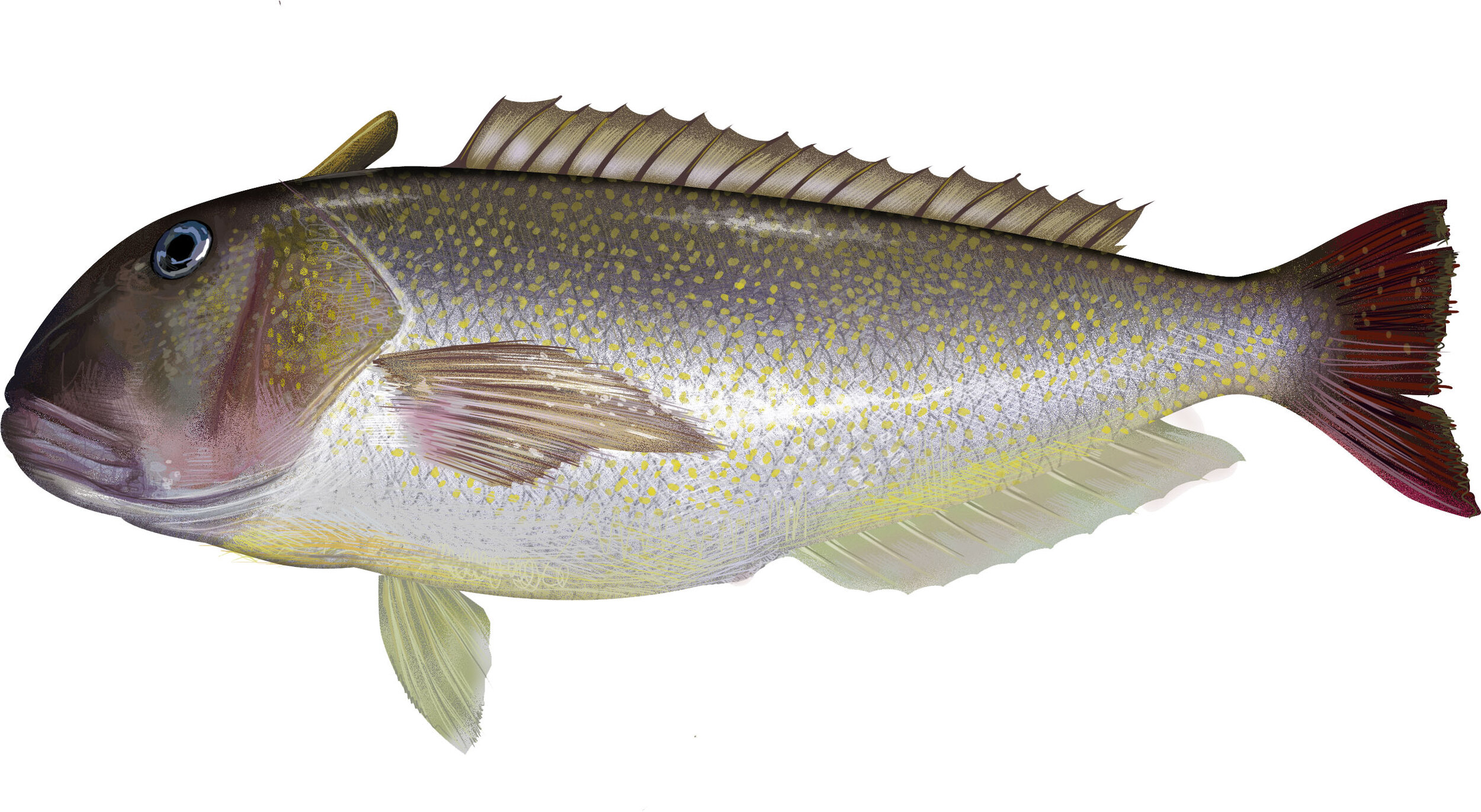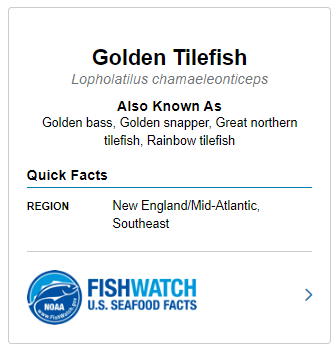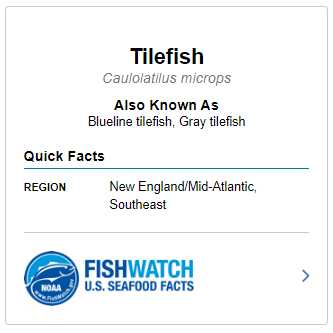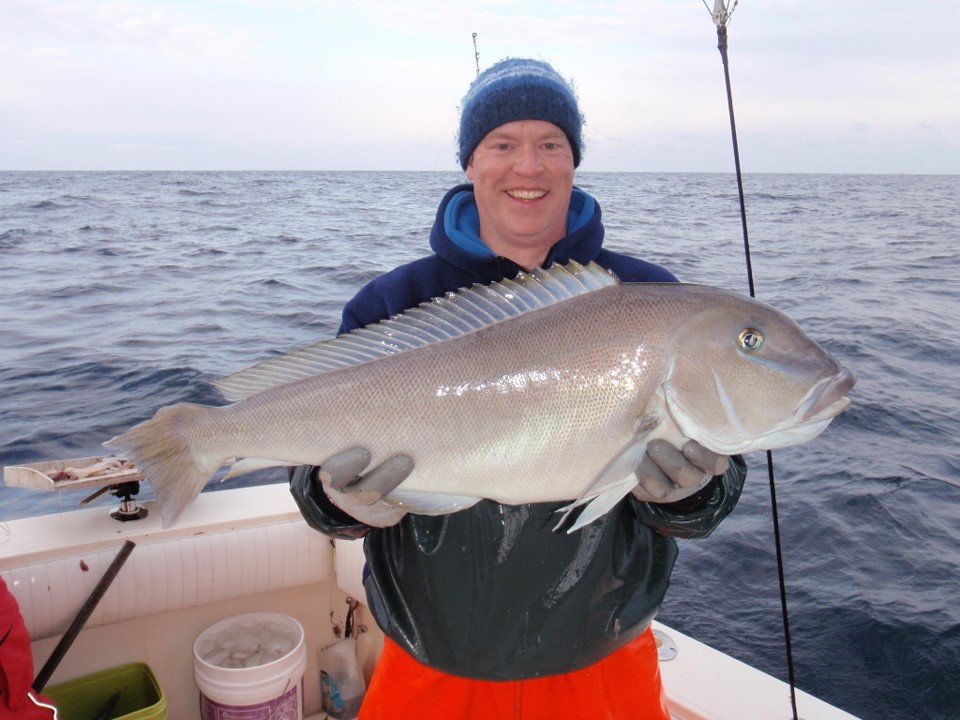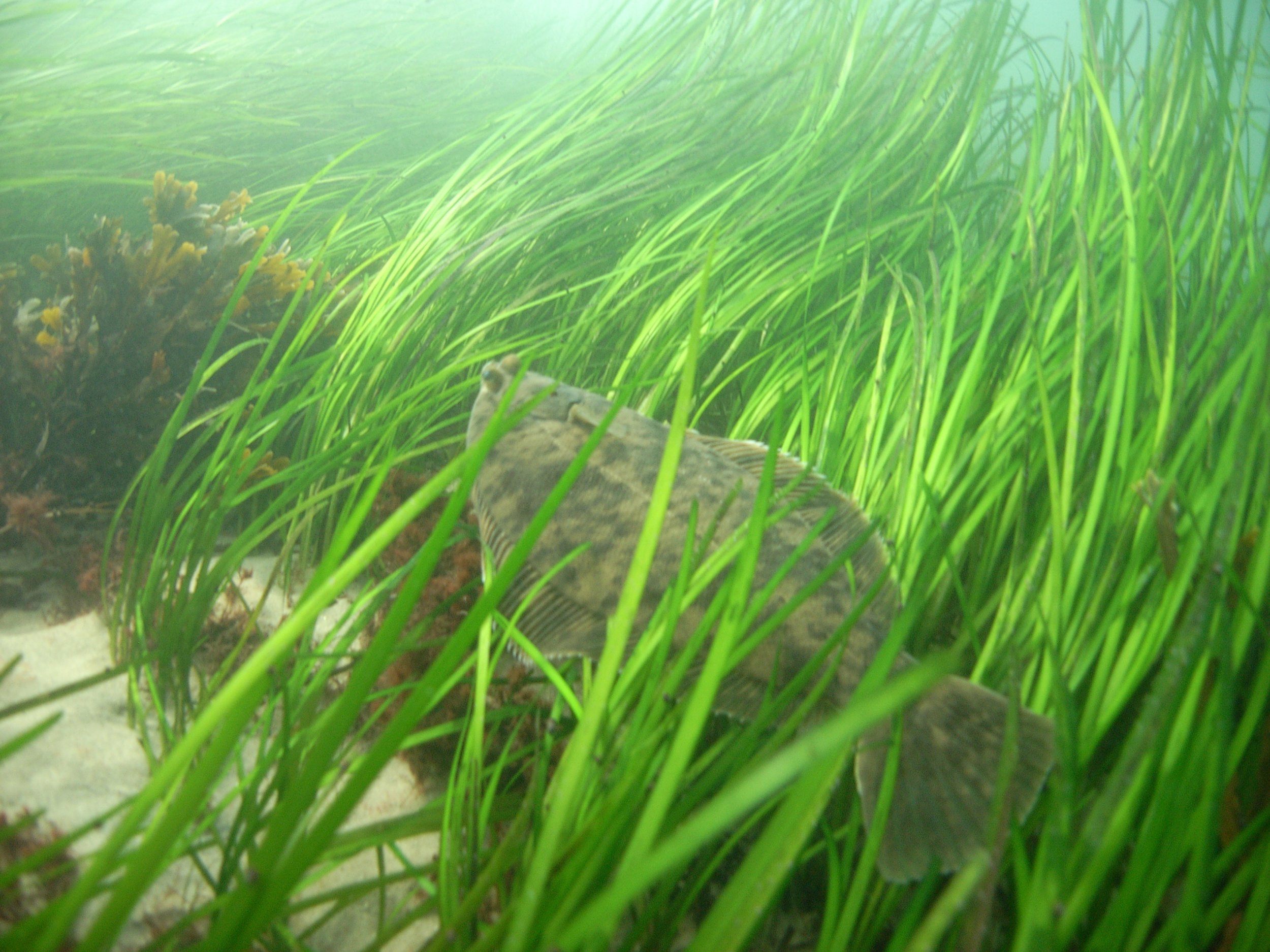Golden and Blueline Tilefish
Overview
The Council manages golden and blueline tilefish from Virginia through Maine under the Tilefish Fishery Management Plan (FMP). The FMP was initially developed by the Council in 2001 for golden tilefish, which has operated under an individual fishing quota program since the implementation of Amendment 1 in 2009. Blueline tilefish was added to the Tilefish Fishery Management Plan by Amendment 6 in 2017. The management unit for this FMP includes all U.S. federal waters north of the NC/VA border. Golden and blueline tilefish south of the NC/VA border are managed by the South Atlantic Fishery Management Council (SAFMC).
Staff Contacts
Golden Tilefish: José Montañez, (302) 526-5258
Blueline Tilefish: Hannah Hart, (302) 526-5263
Related Pages
Regulations
Additional information about the management and status of these fisheries, including commercial and recreational fishing regulations, is available on the NOAA Fisheries FishWatch profiles linked below.
Federal regulations are also described in the Electronic Code of Federal Regulations (e-CFR) section linked below.
Private Recreational Tilefish Permitting and Reporting
All private recreational vessels targeting or retaining golden or blueline tilefish from Virginia to Maine are subject to certain permitting and reporting requirements.
Permitting: Any recreational vessel that intends to fish for blueline or golden tilefish north of the North Carolina/Virginia border must have a Federal private recreational tilefish vessel permit before taking a trip. Apply for a permit on the GARFO Fish Online website.
Reporting: Recreational vessel operators must report all trips that either targeted or retained tilefish within 24 hours of returning to port using an approved electronic vessel trip reporting (eVTR) system. Learn more about eVTR options here.
Learn more about private recreational tilefish permitting and reporting →
Actions Under Development
Golden Tilefish Catch Share Program Review
The golden tilefish fishery is managed using Individual Fishing Quota (IFQ), which is a specific type of Limited Access Privilege Program (LAPP). LAPPs are required to be reviewed regularly by the Council and the Secretary of Commerce.
Golden Tilefish Individual Fishing Quota Program Twelve-Year Review (September 2023)
Golden Tilefish Individual Fishing Quota Program 5-Year Review (September 2017)
Fishery Performance Reports and Information Documents
Fishery Performance Reports (FPR) are developed every year by each fishery's advisory panel to provide the Council and SSC with a description of the factors that influenced fishing effort and catch within each of the Council’s fisheries. Prior to the development of the FPR, Council staff summarize the most recent catch, landings, and effort data in a Fishery Information Document. These documents for the golden tilefish fishery are listed below.
Fishery Management Plan and Amendments
2001: The Original Tilefish FMP initiated management for golden tilefish and included management and administrative measures to ensure effective management of the tilefish resource. The FMP also implemented a limited entry program and a tiered commercial quota allocation of the TAL. Other elements of the original FMP included: a stock rebuilding strategy; permits and reporting requirements for commercial vessels, operators, and dealers; a prohibition on the use of gear other than longline gear by limited-access tilefish vessels (later amended see discussion below); and a framework adjustment process. Final Rule - 9/26/2001.
2001: Framework 1 added provisions for a research set-aside quota. Final Rule - 8/10/2001.
2007: Amendment 2 was an Omnibus Amendment that implemented a Standardized Bycatch Reporting Methodology (SBRM). Final Rule - 1/28/2008.
2009: Amendment 1 (Appendices and Figures) implemented an Individual Fishing Quota in the directed golden tilefish fishery. It also implemented new reporting requirements and gear modifications, addressed recreational fishing issues, and reviewed the EFH components of the FMP, including implementing gear restricted areas to prevent bottom trawling in habitat areas of particular concern. Final Rule - 8/24/2009.
2011: Amendment 3 was an omnibus amendment that implemented Acceptable Biological Catches (ABCs) and Annual Catch Limits (ACLs) to avoid overfishing and ensure accountability. Final Rule - 9/29/2011.
2015: Amendment 4 was an omnibus amendment that implemented a new Standardized Bycatch Reporting Methodology to address a legal challenge. Final Rule - 6/30/2015.
2017: Amendment 5 - Unmanaged Forage Omnibus Amendment implemented management measures to prevent the development of new, and the expansion of existing, commercial fisheries on certain forage species in the Mid-Atlantic. See the Unmanaged Forage Amendment page for more information about this action. Final Rule - 8/28/17.
2017: Framework 3 - Omnibus For-Hire Electronic Trip Reporting Framework implemented a requirement for vessels that hold party/charter permits for Council-managed species to submit vessel trip reports electronically (eVTRs) while on a trip carrying passengers for hire. Final Rule - 9/11/2017.
2017: Amendment 6 - Blueline Tilefish Amendment incorporated blueline tilefish (Caulolatilus microps) as a managed species in the Tilefish Fishery Management Plan and stablished blueline tilefish management measures, including, annual catch limit process, sector allocations, possession limits, fishing season, permitting, and reporting requirements. Final Rule - 11/15/2017.
2018: Framework 2 implemented several changes intended to improve and simplify the administration of the golden tilefish fishery. Final Rule - 3/13/2018.
2018: Framework 4 (Omnibus Acceptable Biological Catch Framework) established a process for setting constant multi-year Acceptable Biological Catch (ABCs) and clarified the process for setting ABCs for each of the four types of ABC control rules. Final Rule - 4/11/2018.
2020: Framework 5 – Omnibus Commercial Electronic Reporting Framework established a requirement for commercial vessels with federal permits for all species managed by the Mid-Atlantic and New England Councils to submit vessel trip reports electronically within 48 hours after entering port at the conclusion of a trip. Final Rule - 11/10/20.
2020: Framework 6 – Omnibus Acceptable Biological Catch and Risk Policy Framework modified the Council’s ABC control rule and risk policy. The revised risk policy is intended to reduce the probability of overfishing as stock size falls below the target biomass while allowing for increased risk and greater economic benefit under higher stock biomass conditions. This action also removed the typical/atypical species distinction currently included in the risk policy. Final Rule - 12/15/20.
2022: Framework 7 – The Tilefish Multi-year Specifications Framework made minor process related modifications to the golden tilefish management system that will improve the administration of the golden tilefish management system. More specifically, the framework sets the golden tilefish fishing year as the 12- month period beginning with January 1, annually. The framework also modified the annual specifications process, so that specifications can be set for the maximum number of years needed to be consistent with the Northeast Region Coordinating Council-approved stock assessment schedule. Final Rule - 11/10/22.
Recent Research and Reviews
2020 and 2023 Golden Tilefish Fishery Independent Surveys: In 2020 and 2023, the Council funded year-long golden tilefish fishery independent surveys in waters off New York to the Virginia/North Carolina line.
2020 fishery-independent bottom longline survey for the Mid-Atlantic Golden Tilefish
2023 fishery-independent bottom longline survey for the Mid-Atlantic golden tilefish
Fisheries-Independent Pilot Survey: A fisheries-independent pilot survey was conducted by SUNY Stony Brook for golden and blueline tilefish from Georges Bank to Cape Hatteras. The final report from this study is available at the link below.

